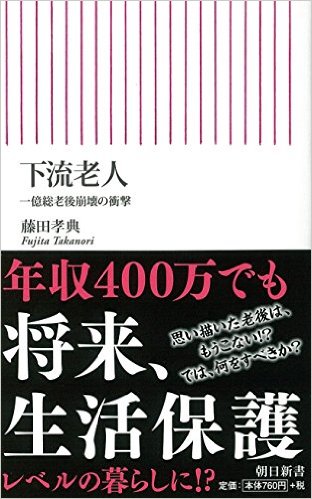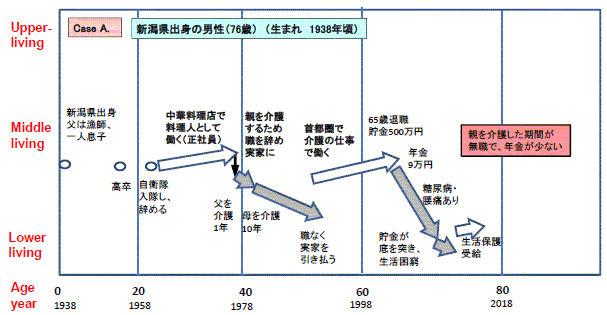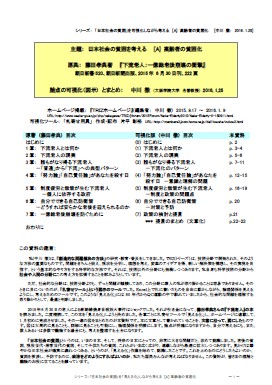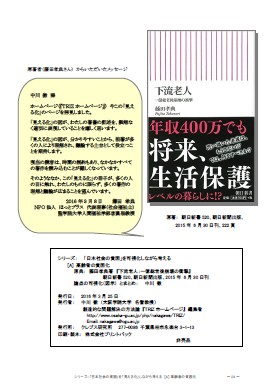In the last chapter of the book, the Author writes his personal proposals of policy. (Nakagawa used Visual Thinking diagrams for clarifying the Authors proposals, and then wrote down in sentences.)
The Author proposes as follows:
(1) First of all, the government should realize that the poverty exists widely and growing further in the people and should address the issue of correcting the income disparity and take measures to fight against poverty.
(2) Under the principles of fundamental human rights, Fundamental Law of Fighting against Poverty should be enacted, and the measures for preventing people from getting poor and for saving people from the poverty should be made as the important strategy of Japan.
(3) The government and all the municipal governments should inform that the poor and needy people (including the low-living elderly) can be saved by the social welfare and should guide them to apply for the welfare.
(4) The current system of social welfare should be decomposed into their support categories, so that the supports can be received more smoothly. By supporting the people for some partial categories in the current welfare, the people can make their own living before entirely losing their properties.
(5) Support the people for their housing rent (partially). This releases the low-living people (including the elderly and the young) from the rather heavy burden of rent and builds a better condition for the young to have their home, thus becomes effective as the measures for increasing children.
(6) The current reduction measures of the national pension premium should be informed, so that the low-living young people apply for the reduction instead of no payment in silence.
(7) In place of the current national pension system, a new system should be built in order to guarantee all the people for their living in their elderly days at the minimum level of healthy and cultural living which is guaranteed in the Constitution.
(8) After all, it corresponds to the living support in the social welfare system. Then the current national pension system should rather be quitted and integrated as the living support in the new social welfare system, as described in (4).
(9) For building a society where people can live happily, all the people in Japan should consider and choose proper systems including the taxation system for redistributing the wealth, and should proceed for its realization.




